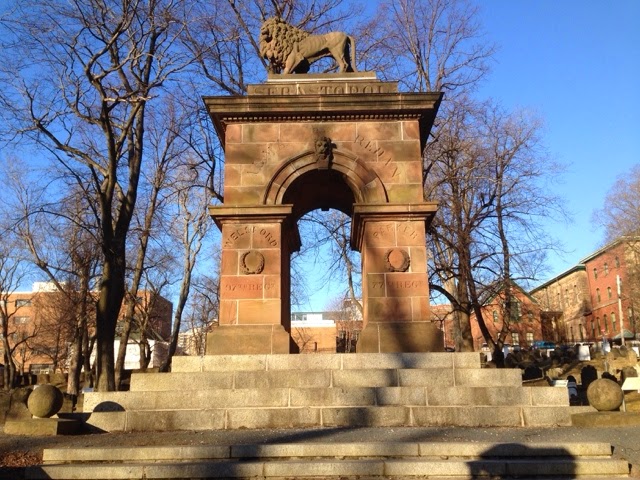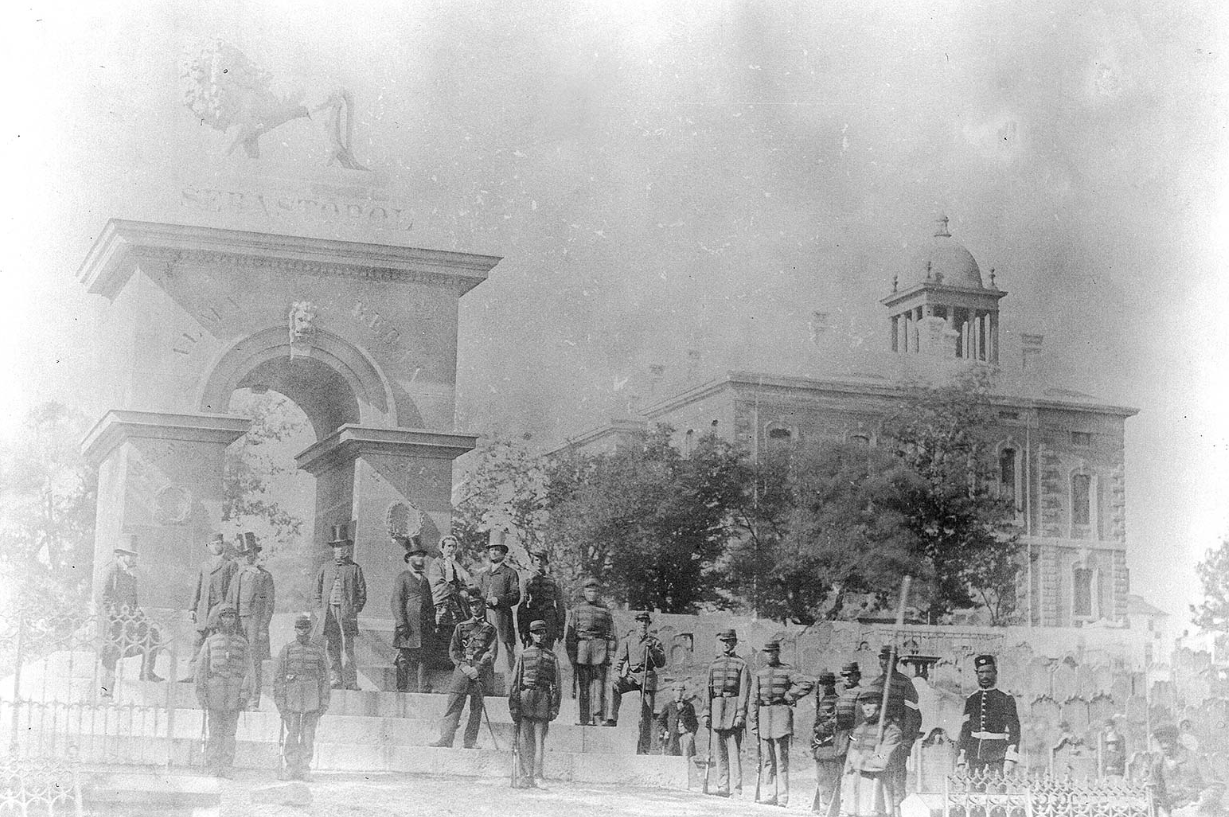The Welsford-Parker Monument is a triumphal arch located in the Old Burying Ground. This is the second oldest war monument in Canada and the only monument to the Crimean War in North America.
The Monument was inaugurated in a ceremony on July 17th 1860, and the committee that erected it was composed of H. Pryor, A.M. Uniacke, W.J. Almon, J. Duffus, B. Binney, and J.C. Cogswell.
The Acadian Recorder for 21 July reported on the Inauguration:
The afternoon was clear, but uncomfortably warm. A little after 2 o’clock, the procession formed on the Grand Parade. It consisted of all the Halifax and Dartmouth Volunteer Companies, a large number of the Masonic body, and various public officials. These, paraded by bands of music, marched down Barrington Street to the old Cemetery, where detachments of the Regular troops of the garrison were already stationed. The military portion of the assemblage formed a hollow square around the Monument, within which ticket holders were admitted. A large assemblage, especially of the fair sex, were present to witness the proceedings; and the gloomy old graveyard for once presented a gay appearance. The ceremonies commenced with prayer by the Rev. John Scott. His Excellency the Lieutenant Governor, Lord Mulgrave then addressed the assemblage at some length and, in concluding, introduced the Rev. George Hill, the Orator of the day. Mr. Hill’s oration was an able and eloquent effort, and is, we understand, to be printed. Major General Charles Trollope also spoke in his usual popular and humorous style, and Rear Admiral Sir Alexander Milne made a few remarks. A great deal of cheering was done and the proceedings concluded by the Volunteer Artillery under the command of Captain Tremain, firing13 minute guns, and by the bands playing and the whole assemblage singing the National Anthem. We find that while the ceremonies were going on, Chase, the clever photographer succeeded in taking an excellent photographic view of the whole scene, a copy of which we have no doubt many people will hasten to secure, as a memento of the day and the event.
The arch and lion were constructed under the direction of George Lang to commemorate the British victory in the Crimean war and the Nova Scotians who had fought in the war. George Lang also was responsible for the Federal Building which is now part of the AGNS.
The memorial is named after two Haligonians, Major Augustus F. Welsford of the 97th Regiment and Captain William B.C.A. Parker of the 77 Regiment, who both died in the Battle of the Great Redan in 1855 during the Siege of Sevastopol.







